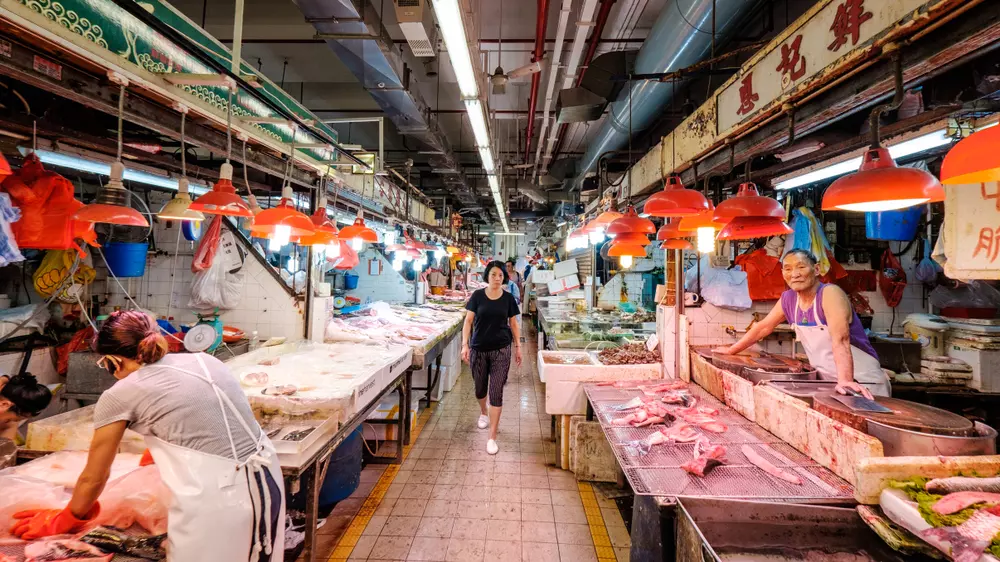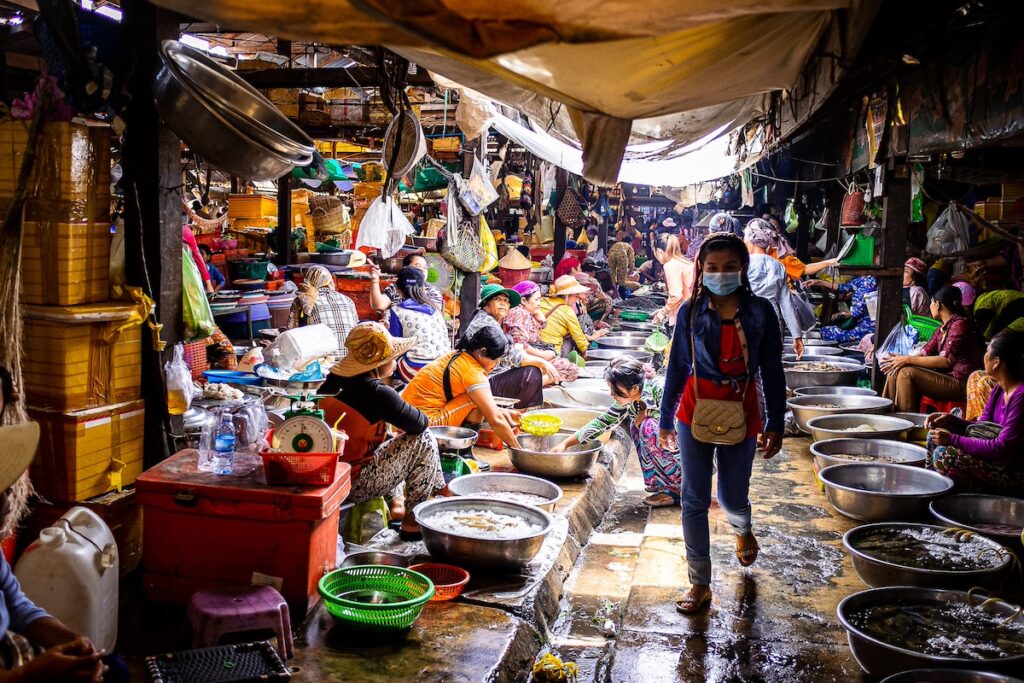
COVID-19, Launched from a Chinese Live-Animal Market, Is Also a Cause for Self-Reflection When It Comes to Our Treatment of Animals
In a global economy, the spread of pathogens, intertwined with the trifling exchanges of cash for the lives of wild animals, can ricochet across the planet in a matter of weeks. A casual transaction in a small, open-air market in Wuhan has affected, to varying degrees, every one of our lives. It’s affected our movements, shopping volume, savings, social interactions, stress levels, and far more. For the unwilling human hosts of the virus, it’s caused emotional distress, physical malaise, and, in some cases, death.

While eliminating wet markets must be a foreign policy priority for the United States — an objective, much to our detriment, that our public officials probably never seriously considered before this public health catastrophe — let’s also be sure also to use this crisis as an opportunity for some national self-reflection. What kinds of animal exploitation policies are we failing to examine that have their own potential for creating mayhem when it comes to our public health and economic well being? A proper threat assessment has never been more timely.
We have our own live animal markets in the United States, cocooned mainly in Chinatown sections of some major American cities. These markets don’t serve up as many species for sale to customers as their analogues in China, but patrons can indeed sample the live, imported wildlife from some Asian nations by the millions.
Our nation’s factory farmers are dosing billions of animals with antibiotics even when the animals are not sick. Many industrial farmers lace water and feed with antibiotics to spur fast growth of the animals and to prevent disease in overcrowded, stressful environments. The American Medical Association, the American Public Health Association, and others have warned that this practice has already spawned antibiotic-resistant bacteria, including MRSA. With this practice and others that render antibiotics ineffectual, we are setting ourselves up for a scenario where pathogens that can course through the human population without us having an effective medical response. The Center for Disease Control and Prevention released a report in November 2019 that found “drug-resistant infections and deaths are on the rise, sickening more than 2.8 million people, and taking the lives of 35,000, in the United States each year.”
In a global economy, the spread of pathogens, intertwined with the trifling exchanges of cash for the lives of wild animals, can ricochet across the planet in a matter of weeks. A casual transaction in a small, open-air market in Wuhan has affected, to varying degrees, every one of our lives. It’s affected our movements, shopping volume, savings, social interactions, stress levels, and far more. For the unwilling human hosts of the virus, it’s caused emotional distress, physical malaise, and, in some cases, death.
While eliminating wet markets must be a foreign policy priority for the United States — an objective, much to our detriment, that our public officials probably never seriously considered before this public health catastrophe — let’s also be sure also to use this crisis as an opportunity for some national self-reflection. What kinds of animal exploitation policies are we failing to examine that have their own potential for creating mayhem when it comes to our public health and economic well being? A proper threat assessment has never been more timely.
We have our own live animal markets in the United States, cocooned mainly in Chinatown sections of some major American cities. These markets don’t serve up as many species for sale to customers as their analogues in China, but patrons can indeed sample the live, imported wildlife from some Asian nations by the millions.
Our nation’s factory farmers are dosing billions of animals with antibiotics even when the animals are not sick. Many industrial farmers lace water and feed with antibiotics to spur fast growth of the animals and to prevent disease in overcrowded, stressful environments. The American Medical Association, the American Public Health Association, and others have warned that this practice has already spawned antibiotic-resistant bacteria, including MRSA. With this practice and others that render antibiotics ineffectual, we are setting ourselves up for a scenario where pathogens that can course through the human population without us having an effective medical response. The Center for Disease Control and Prevention released a report in November 2019 that found “drug-resistant infections and deaths are on the rise, sickening more than 2.8 million people, and taking the lives of 35,000, in the United States each year.”
We have an exotic animal trade that also threatens to spread zoonotic diseases. Often operating in the shadows, exotic pet dealers, and even pet stores, sell snakes, reptiles, and all manner of creatures to fanciers who fancy the unfamiliar and the novel. Remember, it was a prairie dog sale that spawned the emergence of monkeypox some years ago.
There are thousands of canned hunting and captive cervid farms in the United States, unnaturally concentrating captive wildlife and posing their own risks to native wildlife and to people. These facilities are incubators of Chronic Wasting Disease, a brain-wasting disorder that has spread into more than a dozen states and infected free-roaming wild deer and elk populations. It’s thought that hunters who consumer infected parts of the animal may be at risk of contracting Creutzfeldt–Jakob disease, which is the human variant of CWD and also Mad Cow Disease.
So, yes, point your finger at China for horrid, inhumane, and extreme practices when it comes to our food markets. But while we’re doing so, let’s clean up our own act.We have an exotic animal trade that also threatens to spread zoonotic diseases. Often operating in the shadows, exotic pet dealers, and even pet stores, sell snakes, reptiles, and all manner of creatures to fanciers who fancy the unfamiliar and the novel. Remember, it was a prairie dog sale that spawned the emergence of monkeypox some years ago.
There are thousands of canned hunting and captive cervid farms in the United States, unnaturally concentrating captive wildlife and posing their own risks to native wildlife and to people. These facilities are incubators of Chronic Wasting Disease, a brain-wasting disorder that has spread into more than a dozen states and infected free-roaming wild deer and elk populations. It’s thought that hunters who consumer infected parts of the animal may be at risk of contracting Creutzfeldt–Jakob disease, which is the human variant of CWD and also Mad Cow Disease.
So, yes, point your finger at China for horrid, inhumane, and extreme practices when it comes to our food markets. But while we’re doing so, let’s clean up our own act.
Other NLEC News

We have our own live animal markets in the United States, cocooned mainly in Chinatown sections of some major American cities.